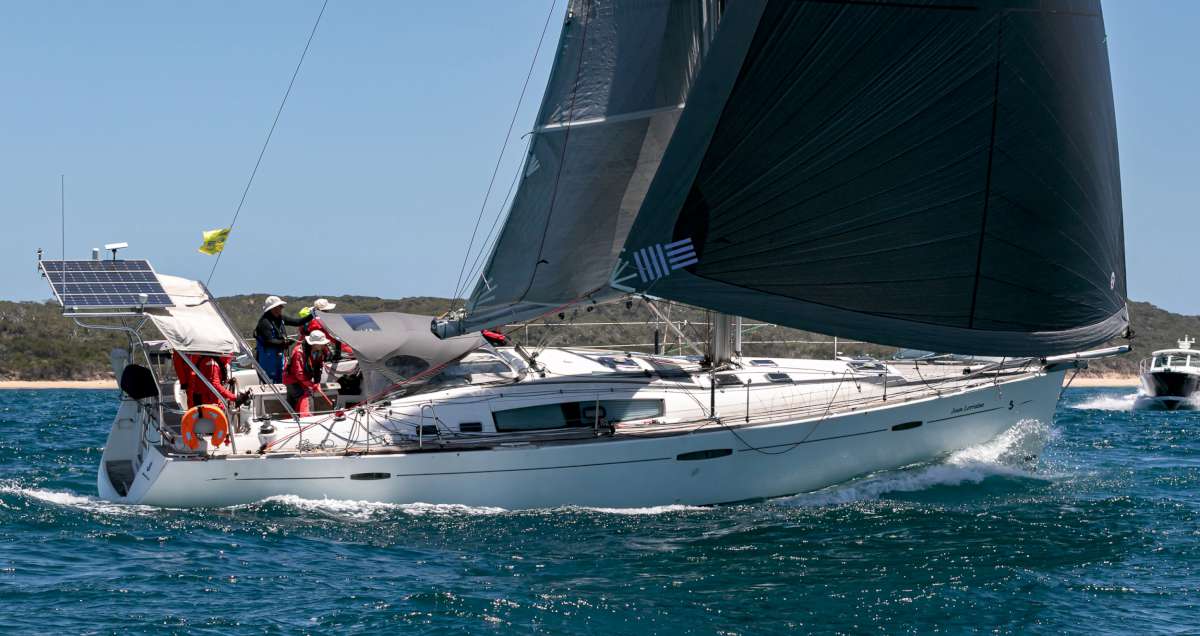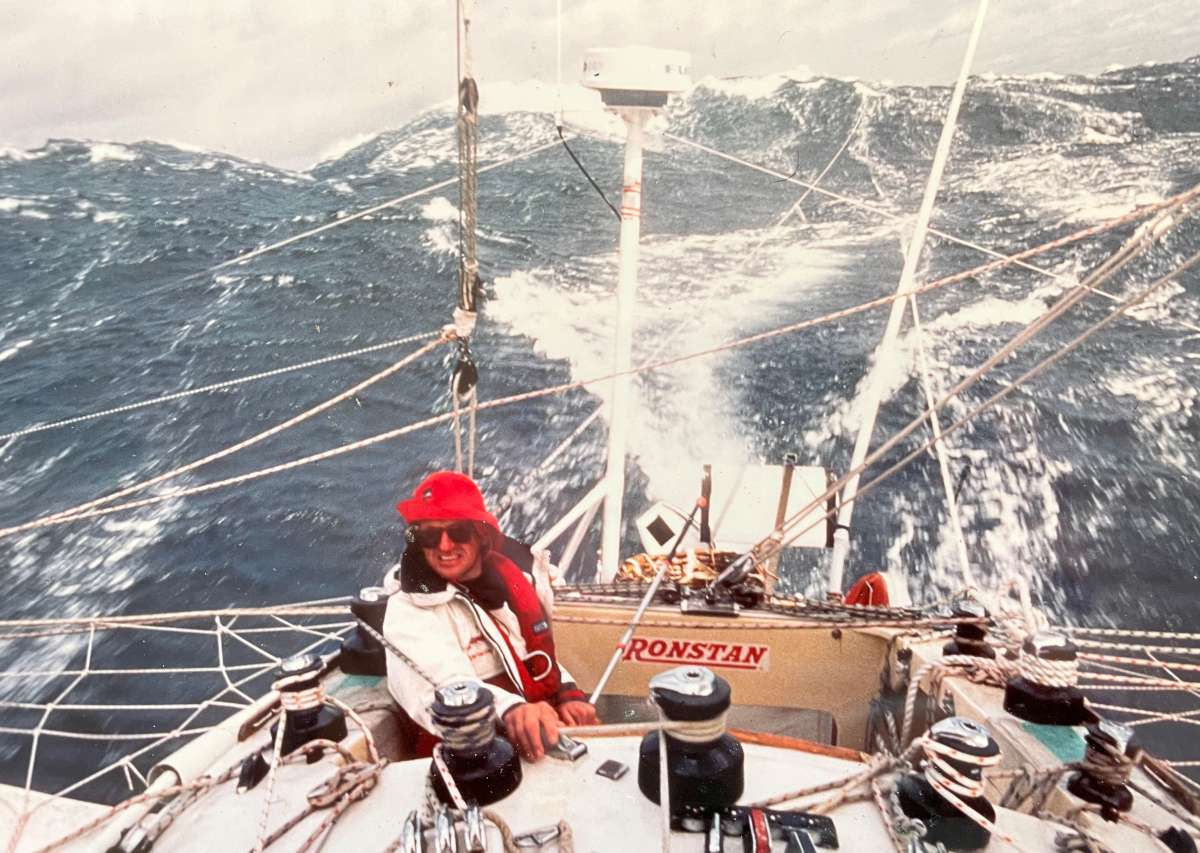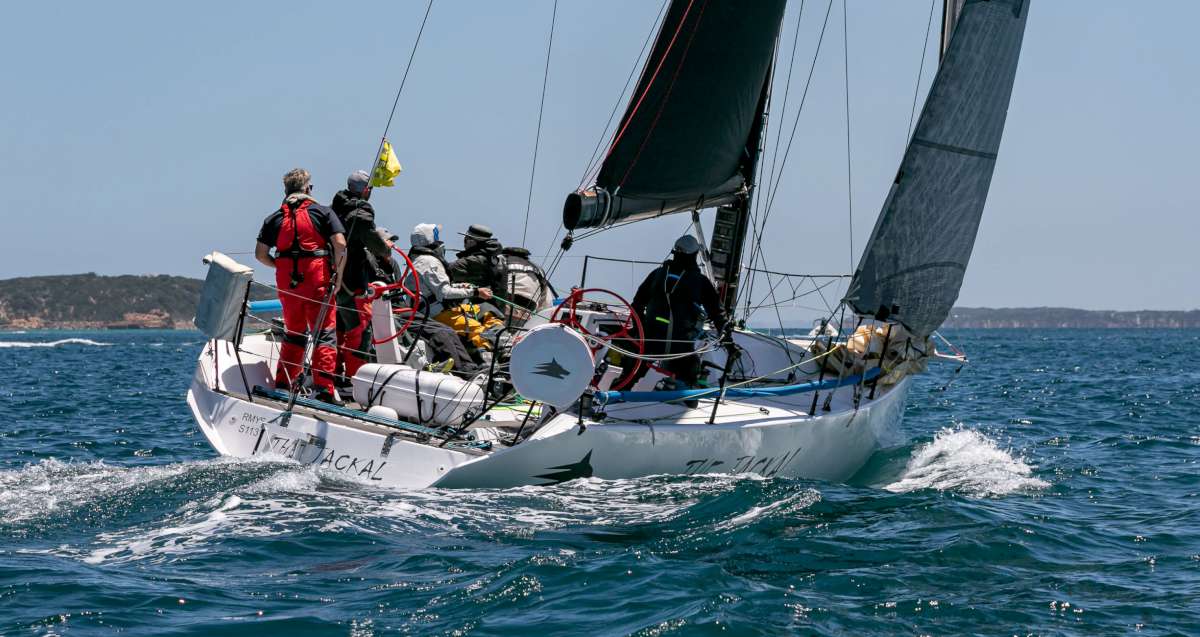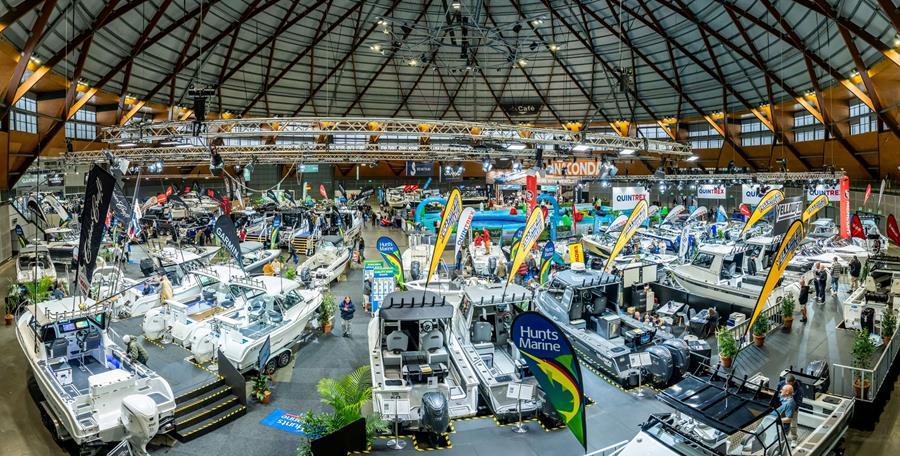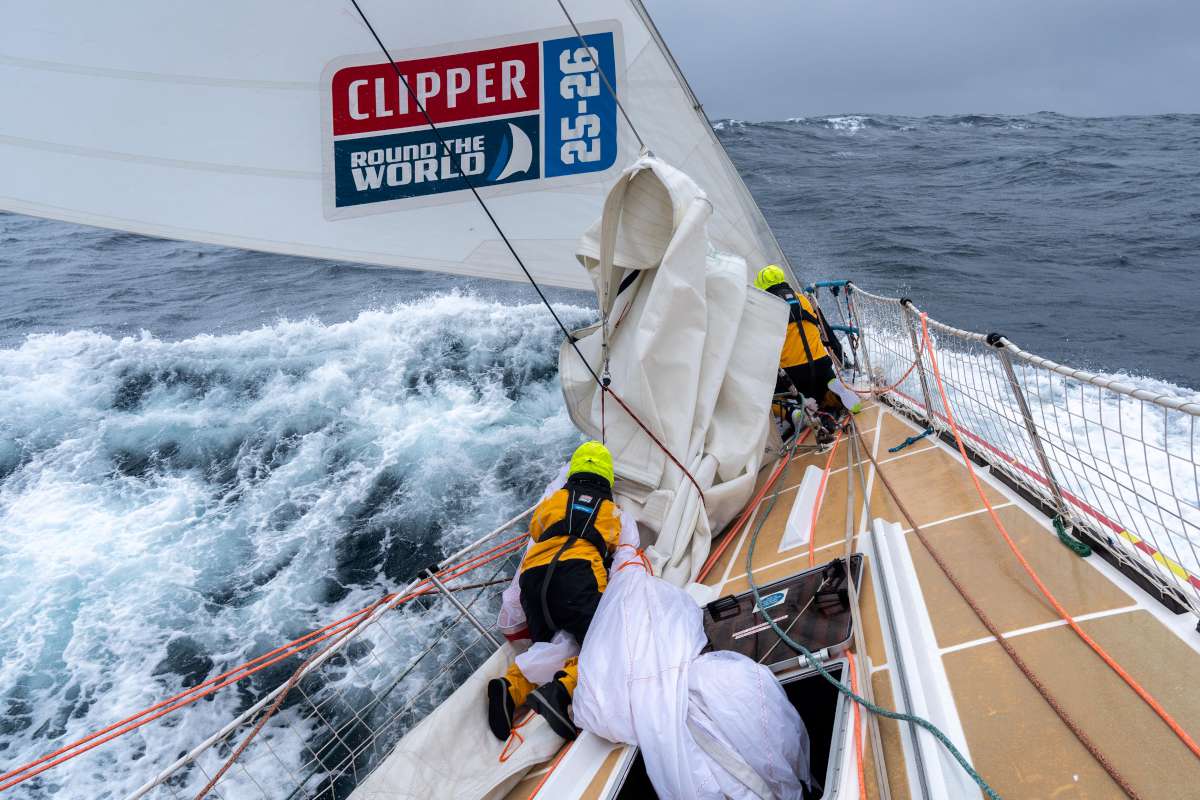There are few things that set off a classic yacht as beautifully as a well laid teak deck. It is relatively non-slip, provides insulation for the cabin and, equally importantly, adds to the traditional appeal.
But mine had another undesirable characteristic: it was laid some 35 years ago, a lifetime in boat years
and so, it leaked.
Unfortunately our preferred material, teak, is relatively soft and wears despite salt baths and loving care. Also, the relentless Australian sun accelerates the damage and deterioration. While the methods of attaching teak have improved since mine was laid, it is still extremely expensive and needs an expert craftsman to do the job properly.
Tracking down leaks gave me great satisfaction each time another one was found and plugged, but it is a game I tired of very quickly. Sleeping under a plastic sheet held no attraction so we made the decision: the old deck had to go!
Closer inspection showed a lot more wear, especially in high traffic areas, than I originally noticed. To add to the problem the caulking had broken down, allowing water to seep in under the deck exacerbating the leaks and making them harder to track. The water can flow a long way before entering the cabin dripping onto the occupants, books and electronics each time it rained or we took a good wave. Add to this rot in some planks and others buckling and it was clear the time was right to modernise.
We asked around the wooden boat builders and shipwrights and they all said one thing, get rid of it. While the boat looks beautiful, the cost of laying another teak deck made no economic sense; at $30,000 to $40,000 it was as much as the hull. The consensus was that it would continue to be a maintenance liability despite modern glues removing the need to screw the timber through the fibre glass deck. So a new plastic deck was the only sensible solution.
Removing the old timber
Always the hardest part of any project is getting started and this was no exception. It took some encouragement from boat building friends to get going, but once started there was no turning back.
I initially tried to remove the timber gently to preserve some of the teak and reduce damage to the underlying covering, but due to the age and condition of the wood, I quickly resorted to brute force. Using a small jemmy bar and claw hammer I made good progress as the worn and brittle timber broke away easily.
By cutting a line across each plank with a sharp chisel, each side of the screws, we sped the process up even more. The remaining timber was easily knocked out exposing the countersunk screws.
As each plank came away the source of all my problems was revealed. Many short term repairs were uncovered along with dozens of unfilled holes; I suppose the thinking at the time was that the sealant would keep the water out. Well it did not.
The original Mastic sealant had broken down allowing much of the wood to lift and twist, in many cases tearing the timber away from the screw heads. I used a battery drill fitted with a screw driver blade to remove each screw. I kept them all as I could use them in later projects or trade them.
To clear the deck for glassing every fitting had to be removed: toe rail, stanchions, cleats, chain plate bonnets, anchor winch, pulpit, pushpit, radar tower, etc. Many of these had been on for a long time, but due to the inevitable deterioration they came away easily.
Stainless backing plates and the associated bolts were stored in individual sealed plastic bags, labelled and placed in cardboard boxes for reinstallation later. This was one of my better ideas as the time taken for the job extended into months rather than the weeks I originally allowed for.
Some footings and backing pads needed to be renewed as they were made from ply that had delaminated. These broke up easy and the replacement parts gave a nice project at home during the inevitable rainy days.
Broken fittings were repaired and cleaned or painted and stainless parts welded and polished ready to be re-installed.
Preparing the deck
As the timber was broken away, some 1,500 screws were progressively exposed. Once removed the holes were plugged with a temporary filling of caulking compound from the local hardware shop. I originally intended using epoxy filler but the expense and the need to plug each hole as the screws were removed ruled this out. Also, I found that even with this care I still missed some that advertised their presence as soon as the next rain storm arrived.
At this stage it would have been sensible to have taken the boat and put it into a shed for the rest of the project. But as I only had a few days available each month, this would have become prohibitively expensive, so we worked around the bad weather.
A marina berth would have simplified things but many marinas, especially around the city, are not friendly to real yachties and do not allow maintenance work to be carried out. Of course I wanted to have the boat ready for the warmer weather and so planned to work during winter.
This is not usually a huge problem in Sydney as winter is relatively mild and the real heavy rain does not arrive until spring. But this year was different; La Nina arrived unambiguously just as soon as the deck was exposed. As I live a long way from the water, I have to rely on the official weather forecasts which tend to be somewhat pessimistic.
I did chance my luck on several occasions but still missed a few, proving even though you win some and lose some, drizzle is just as bad as heavy rain.
The black gunk that had originally sealed the teak to the fibreglass underneath had broken down completely, becoming a tough rubber-like mess. Removing it with power tools merely melted it, clogging even coarse (40grit) sand paper.
So we removed as much of the thicker lumps as we could with paint scrapers and then attacked it with a grinding disc on an angle grinder. This was more successful with electricity provided by a portable generator.
The resulting roughness was ideal for keying the new layer of resin and glass.
Laying new fibreglass and painting the deck
We had to wait several weeks for the rain to ease and the temperature to return to usable, about 23° Celsius and the humidity to fall below 80 per cent.
Eventually the perfect weather window appeared and lasted for the three days the shipwright needed to roll on the chopped strand matting. I needed to have a competent craftsman do this as it could affect the structure of the boat and my insurance company was keenly interested in any work we were doing to the deck.
We put down two layers of chopped strand and polyester resin. I bought this in bulk and saved a considerable amount of money doing so. Then, for the first time in my history with the boat, the deck did not leak. Through the winter storms there were lots of times when it was tested to the limit and not a drop came in!
The next job was to spread resin, thickened to the consistency of yoghurt, over the deck to fill the inevitable irregularities and provide a smooth surface to paint. A few friends came to help and we got most of the deck covered in a short time. I found that using a notched trowel provided the correct thickness.
A long batten drawn lightly over the deck smoothed out small undulations and left it with a good, fair finish. Once this had hardened I inspected the deck in the late afternoon sun. By using a long steel rule I was able to easily identify the irregularities. Hollows were circled with a black felt pen and filled.
After sanding with a long sanding strip, the dreaded torture board, more hollows were found along with a few high spots I had missed; these were marked this time with a red felt pen and sanded.
After this stage I declared the deck good enough; it was after all to be covered with non-slip and was to be walked on. As it was, it looked good.
Other lessons were learnt! I should have taped paper over the hull to mask it as the afternoon sea breeze occasionally gusted to the point where it blew uncured resin and the odd unsecured tool, off the deck. This dripped down over the ample tumblehome and provided another project for me to tackle.
An experienced tradesman would have thought of this, I do now.
After fairing, four coats of Jotun high build epoxy primer went on. This was easy with a roller on a broom stick; the whole project took 20 minutes each coat and because the weather was now warm we could get two coats on in a day.
The recoat time was five hours at 25°C on the deck. In between each coat we sanded lightly and washed it down with water then epoxy brushing thinners.
Next came the Jotun Hard ultra-polyurethane top coat. Another light sand and wash down with water and thinners before the first coat went on. By now the deck is mostly complete.
At this point we discovered another weakness in my choice of work location. I had thought that on my mooring, a quarter of a mile downwind from the nearest land, the air would be clean.
Not so, the amount of grit that found its way onto the deck before the paint set was amazing. Instant non-slip, but I did not want it on this section of the deck, so more sanding before another wash and the second layer of top coat. This time in calmer weather.
Masking off the edge of the deck and around the cleats and anchor windlass kept a clear section of deck for contrast and then on with the non-slip coat. This was the same Hard Top polyurethane with grit mixed in but was not as grippy as I had hoped. I asked around the work shop and was told of a building product used on many fishing boats: Emerclad. This was applied with a very long nap lamb’s wool roller, but even this was not as grippy as I wanted, so a final coat with a lot of sand later and the deck is now satisfactory.
The Emerclad goes on easily and is thick enough to cover many of the tiny pin-holes left in the polyurethane paint.
Nearly finished at last, it is just 12 months since I started.
My one concession to tradition went only as far as the cockpit seats. These I covered with timber to give a small nod to the past beauty of a timber deck.
I used the hardwood Quila, glued then screwed from the bottom and finally oiled. It looks pretty good.
It is easy to maintain and will need only the occasional smear of oil to keep it clean and protected. It needs to be oiled as the natural colour will leach out when it gets wet, this is tedious to remove but does come off with turps and soap.
Replacing the hardware
All the stanchions, pushpit, pulpit, cleats, boarding ladder etc. had been taken home for repairs where necessary and polishing. It is much easier in a warm shed than on deck.
The stanchions were of a construction that had weak points; each of these was welded and strengthened. Also, the pulpit and one stanchion were bent. All were repaired before storing for reattaching.
When all the hardware was returned to the boat, much of the refitting was possible by one person. By using vice grips tied on with venetian blind cord I was able to get enough torque on the top of the bolt to attach the washers and nuts from inside.
For those impossible jobs friends and sons were booked and the job tackled easily with one on top holding everything and one below drilling up and attaching the nuts; the original bolt holes were still visible in the backing from underneath.
I used neutral cure silicone to seal the fittings especially around the bolt holes with everything lightly fastened and then, when the silicone had set, tightening down. This gave a good fitting seal.
Reattach the safety lines, rewire the anchor winch and navigation lights and the job is nearly done.
I renewed the toe rail with Jarrah timber from a high quality timber yard. The timber strips are straight and knot free with a beautiful straight grain. I fitted these between the stanchion bases in line with the posts.
This is easier and cleaner for a home builder than trying to handle a nine metre piece of wood with a compound curve with glue on the bottom. Stainless bolts with large ‘penny’ washers provided a secure fix, with the bolt holes covered with plugs made from the scrap timber. Ten coats of varnish and the job looks most professional.
The finished result
Like any job done the first time I made mistakes, none serious but creating more work than I would have hoped for.
If I ever had to do something as big as this again I would go to the extra expense and transport the boat to a hard stand, or at least build a proper tent over the complete deck alongside somewhere friendly. I would also take more time to seal the inside of the boat against dust as sanding generated much more dirt than I expected.
The result is none the less good; the deck looks good, it is no longer slippery and most importantly for Mrs. Admiral and me, it does not leak!
Of course, the cabin top now looks a bit scruffy in contrast to the new deck so …





